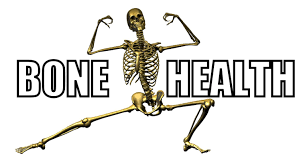
Osteoporosis is a common bone disease that affects both men and women, usually as they grow older. Fortunately, you can take steps to reduce your risk of developing osteoporosis and avoid the often-debilitating bone fractures that can result from this disease.
Osteoporosis is a silent disease of the bones that makes them weaken and prone to fracture. Bone is living tissue that is in a constant state of regeneration, as old bone is removed (bone resorption) and replaced by new bone (bone formation). By their mid-30s, most people begin to gradually lose bone strength as the balance between bone resorption and bone formation shifts, so that more bone is lost than can be replaced. As a result, bones become thinner and structurally weaker.
“In the U.S., about 8 million women and 2 million men have osteoporosis.”
The disease is “silent” because there are no symptoms when you have osteoporosis, and the condition may come to attention only after you break a bone. When you have osteoporosis, this can occur even after a minor injury, such as a fall. The most common fractures occur at the spine, wrist and hip. Spine and hip fractures in particular may lead to chronic pain, long-term disability and even death. The goal of treating osteoporosis is to prevent such fractures in the first place.
What causes osteoporosis?
Many factors will increase your risk of developing osteoporosis and suffering a fracture. Some of these risk factors can be changed, while others cannot. Recognizing your own risk factors is important so you can take steps to prevent this condition from developing or treat it before it becomes worse. Major risk factors include:
- Older age (starting in the mid-30s but accelerating after 50 years of age)
- Non-Hispanic white and Asian ethnic background
- Small bone structure
- Family history of osteoporosis or osteoporosis-related fracture in a parent or sibling
- Previous fracture following a low-level trauma, especially after age 50
- Sex hormone deficiency, particularly estrogen deficiency, both in women (e.g. menopause) and men
- Anorexia nervosa
- Cigarette smoking
- Alcohol abuse
- Low dietary intake or absorption of calcium and vitamin D
- Sedentary lifestyle or immobility
- Medications: glucocorticoid medications; excess thyroid hormone replacement; the blood thinner heparin; certain anti-convulsant medications etc.
- Certain diseases can affect bone, such as endocrine disorders (hyperthyroidism, hyperparathyroidism, Cushing’s disease, etc.) and inflammatory arthritis (rheumatoid arthritis, ankylosing spondylitis, etc.)
How is osteoporosis diagnosed?
A simple test that measures bone mineral density (BMD) at different parts of your body, such as your spine and your hip, can help determine if you have osteoporosis. Dual energy x-ray absorptiometry (DEXA) is the best current test to measure BMD. The test is quick and painless; it is similar to having an x-ray taken, but uses much less radiation. Even so, pregnant women should not have this test to avoid any risk of damaging the developing fetus.
The results of the DEXA test are scored in comparison to the BMD of young, healthy individuals, resulting in a measurement called a T-score. If your T-score is –2.5 or lower, you are considered to have osteoporosis and therefore at high risk for a fracture. T-scores between –1.0 and –2.5 are generally considered to show “osteopenia.” The risk of fractures generally is lower in people with osteopenia when compared with those with osteoporosis but, if bone loss continues, the risk for fracture increases.
Prevention
Lifestyle changes may be the best way of preventing osteoporosis:
- Make sure you are getting enough calcium in your diet
- Make sure you are getting enough vitamin D3 and Vitamin K2
- Stop smoking
- Avoid excess alcohol intake
- Engage in weight-bearing exercises
- Treat underlying medical conditions that can cause osteoporosis
- Minimize or change medications that can cause osteoporosis; never stop taking any medication without speaking with your doctor first
How is osteoporosis treated?
- Make sure there is enough calcium in your diet (600-800 mg per day).
- Get adequate vitamin D intake, which is important for calcium absorption and to maintain muscle strength (minimum of 2000 IU’s per day but many patients use 5000 IU’s per day). Doses can be adjusted according to blood levels of vitamin D – ask your doctor about getting your Vitamin D3 levels checked and compare with our favorite Vitamin D Prevention Chart.
- Get adequate Vitamin K2 intake, which activates a number of special proteins that move calcium around the body. Vitamin K2 attracts calcium into bones and teeth and sweeps calcuim out of soft tissues like arteries and veins. For more information read “Vitamin K2 and the Calcium Paradox” by Kate Rheaume-Bleue.
- Get regular exercise, especially weight bearing exercise.
A number of medications are also available for the prevention and treatment of osteoporosis but these often can have side effects.
We recommend a more natural approach when possible with the use of supplements listed above. Our Ossopan MD and OsaPlex supplements also provide additional bone support with microcrystalline hydroxyapatite concentrate (MCHC), a complex crystalline compound containing calcium, phosphorus, bio-active growth factors, type 1 collagen, amino acids, glycosaminoglycans, and a broad range of essential trace elements that naturally comprise healthy bone. It is best to discuss treatment options with your health care provider.
Supplements to consider:
D3 5000 (Liquid or capsules) – our favorite preventive vitamin!
Vitamin K2-45 – natural vitamin K2 as MK-7 to help get calcium where it is needed and no where else.
Ossopan MD – an encapsulated comprehensive bone support formula
OSAPlex – A multifaceted support for bone health and strength. Provides a complementary combination of micronutrients, including calcium, vitamin D, and vitamin K. Many patients take this supplement to avoid taking prescriptions with side affects.